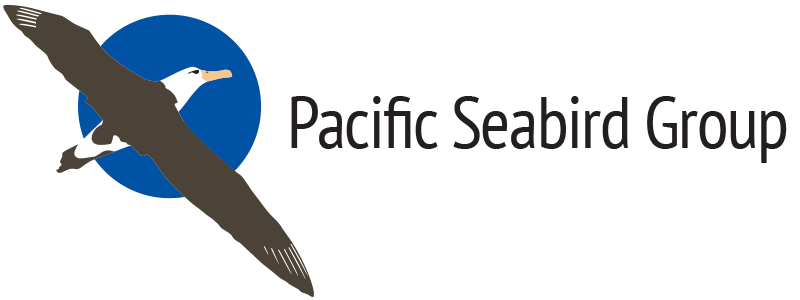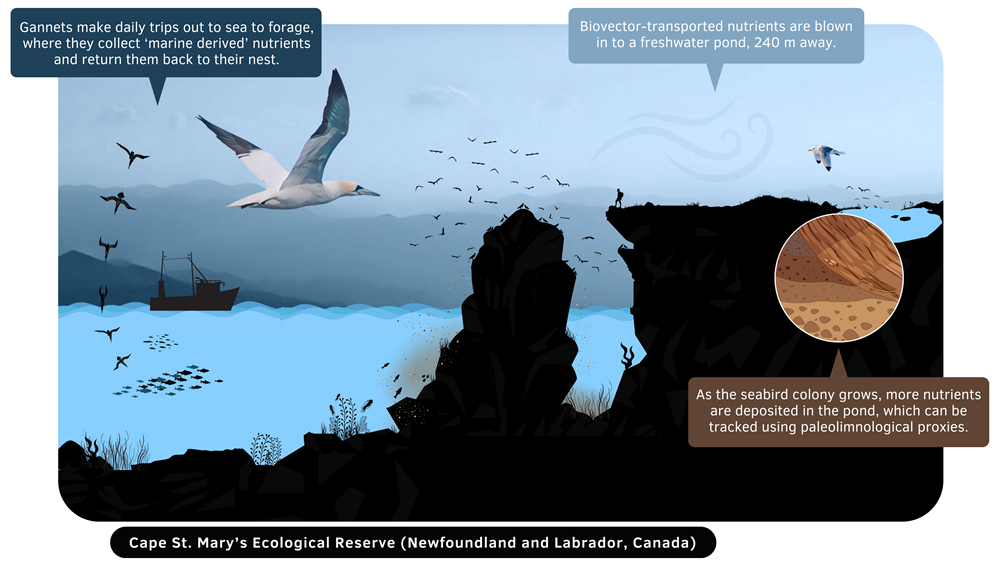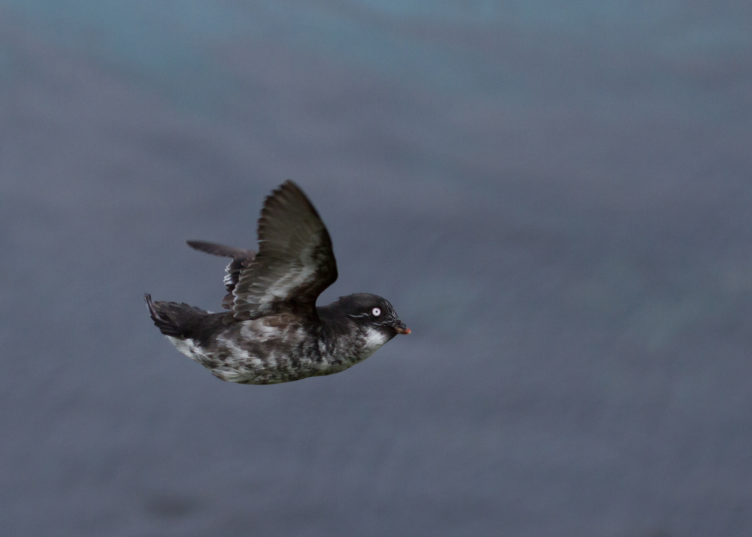Tracking seabird colonies through paleolimnology
By Johanna Bosch, Wildlife Research Division, Environment and Climate Change Canada (johannalisa.bosch@ec.gc.ca)
Paleolimnology, the study of ancient pond and lake sediments, has proven to be an invaluable tool in monitoring seabird colonies over long periods. By studying the sediment layers in freshwater ponds adjacent to nesting sites, paleolimnologists can uncover critical information about the influence of seabird guano on the surrounding ecosystem (Figure 1).
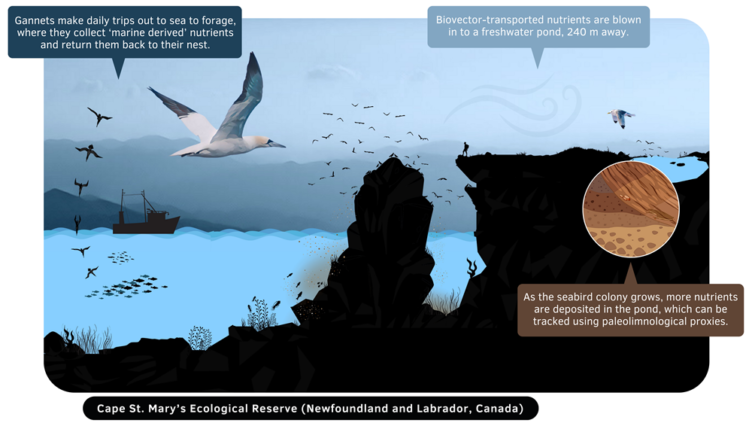
This method allows researchers to go beyond the limitations of historical records and modern census data, providing a detailed look at how seabird populations have fluctuated over centuries. Seabird guano, rich in nutrients such as nitrogen, phosphorus, and trace metals, alters the chemistry and biology of surrounding environments, including any nearby water bodies. Key indicators like nitrogen isotopes, trace metals (Zn, Cd), and diatom species have served as proxies for seabird presence and colony size.
We applied this technique to track the establishment and rapid growth of the northern gannet colony at Cape St. Mary’s (CSM) Ecological Reserve, in Newfoundland and Labrador. For this study, we carefully extracted sediment core from a pond bed near the colony, and then sectioned the core on-site (Figure 2). Once the sectioned core was freeze dried, a precise chronology of the core was obtained using lead (Pb-210) dating. We then analyzed various geochemical and biological shifts occurring in the core over time, known to be related to ornithogenic presence, including δ15N isotopes, levels of cadmium, zinc and phosphorus, as well as primary production and dominant diatom assemblages.
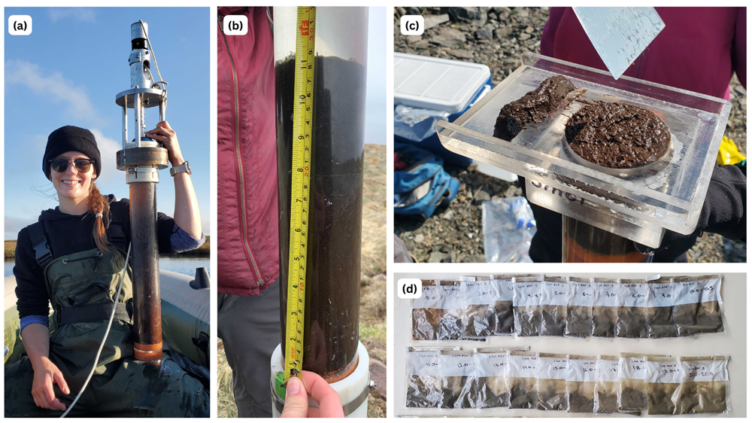
We found that our proxy data aligned closely with historical records for gannets nesting in CSM, showing notable colony expansion throughout the 20th century. Through our paleolimnological data, we could see how the colony developed from relatively small beginnings into the large, thriving population observed today. This work illustrates the power of combining paleolimnological data with modern population records to reconstruct seabird dynamics, offering insights into past ecosystem changes and informing future conservation efforts. Our findings were recently published in Scientific Reports, where we demonstrate how paleolimnological reconstructions can validate historical seabird population data, and highlight the resilience of the Northern Gannets of Atlantic Canada in the face of stressors such as human disturbance, changing ocean conditions, and disease outbreaks, including the recent avian influenza outbreak.
You can read the paper here:
Bosch, JL., Álvarez-Manzaneda, I., Smol, J.P. et al. Blending census and paleolimnological data allows for tracking the establishment and growth of a major gannet colony over several centuries. Sci Rep 14, 20462 (2024). https://doi.org/10.1038/s41598-024-69860-z
